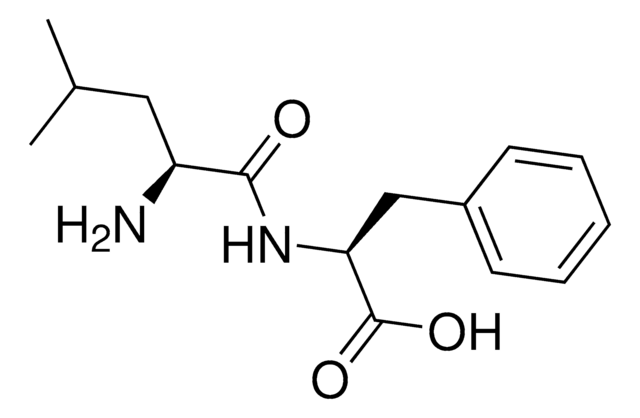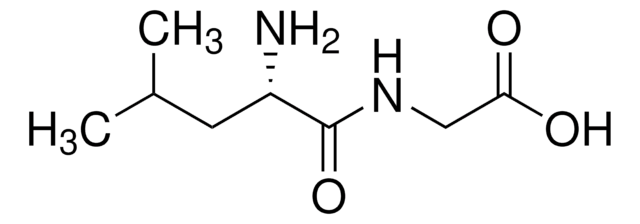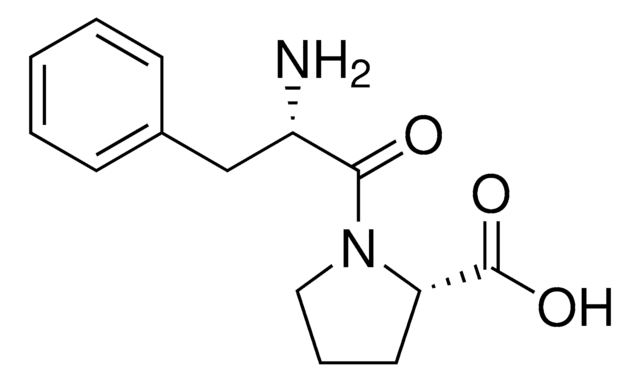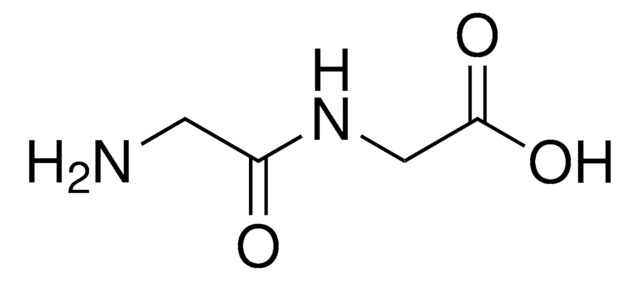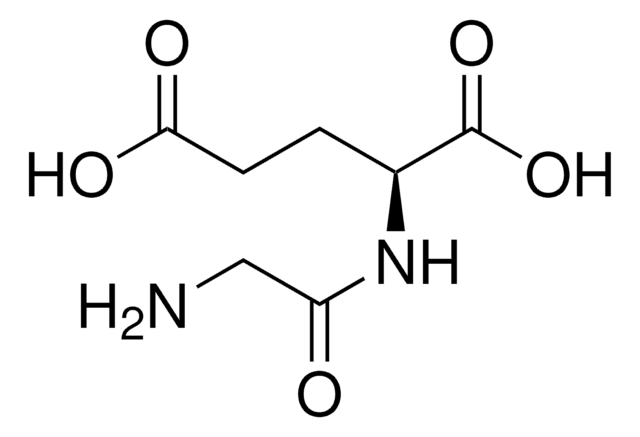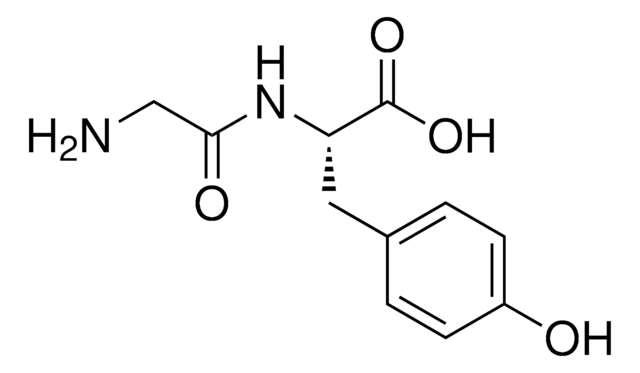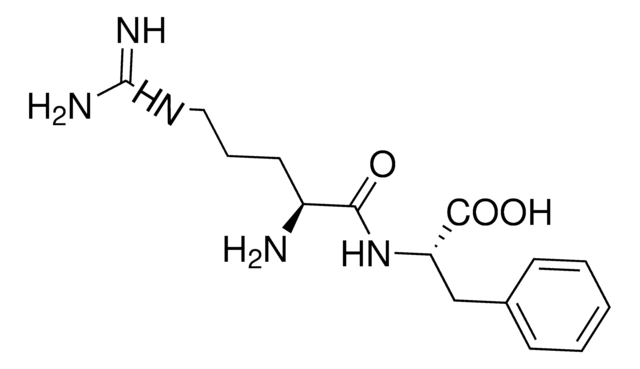M3129
Met-Gly
≥98% (TLC)
Iniciar sesiónpara Ver la Fijación de precios por contrato y de la organización
About This Item
Fórmula empírica (notación de Hill):
C7H14N2O3S
Número de CAS:
Peso molecular:
206.26
Número CE:
Número MDL:
Código UNSPSC:
12352202
ID de la sustancia en PubChem:
NACRES:
NA.26
Productos recomendados
Nombre del producto
Met-Gly,
Ensayo
≥98% (TLC)
Nivel de calidad
Formulario
powder
color
white
temp. de almacenamiento
−20°C
cadena SMILES
OC(CNC([C@@H](N)CCSC)=O)=O
InChI
1S/C7H14N2O3S/c1-13-3-2-5(8)7(12)9-4-6(10)11/h5H,2-4,8H2,1H3,(H,9,12)(H,10,11)/t5-/m0/s1
Clave InChI
QXOHLNCNYLGICT-YFKPBYRVSA-N
Acciones bioquímicas o fisiológicas
Met-Gly is a dipeptide.
Código de clase de almacenamiento
11 - Combustible Solids
Clase de riesgo para el agua (WGK)
WGK 3
Punto de inflamabilidad (°F)
Not applicable
Punto de inflamabilidad (°C)
Not applicable
Elija entre una de las versiones más recientes:
¿Ya tiene este producto?
Encuentre la documentación para los productos que ha comprado recientemente en la Biblioteca de documentos.
J C Matthews et al.
Journal of animal science, 73(11), 3464-3475 (1995-11-01)
The absorption of carnosine, methionine, and methionylglycine (using 35S-methionine and 35S-methionylglycine as representative markers) across ruminal and omasal epithelia collected from four (carnosine) and seven sheep (methionine and methionylglycine) were studied using parabiotic chambers that were repeatedly sampled over a
Olga B Morozova et al.
The journal of physical chemistry. B, 113(20), 7398-7406 (2009-05-15)
Time-resolved chemically induced dynamic nuclear polarization (CIDNP) was applied to the investigation of the photo-oxidation of two sulfur containing peptides, glycylmethionine (Gly-Met) and methionylglycine (Met-Gly). It was established that the reaction of Gly-Met with a photosensitizer, triplet 4-carboxybenzophenone, occurs via
Justin Kai-Chi Lau et al.
Journal of the American Society for Mass Spectrometry, 24(4), 543-553 (2013-02-27)
Radical cations [Met-Gly](•+), [Gly-Met](•+), and [Met-Met](•+) have been generated through collision-induced dissociation (CID) of [Cu(II)(CH3CN)2(peptide)](•2+) complexes. Their fragmentation patterns and dissociation mechanisms have been studied both experimentally and theoretically using density functional theory at the UB3LYP/6-311++G(d,p) level. The captodative structure
Urszula Rychlewska et al.
Acta crystallographica. Section C, Crystal structure communications, 66(Pt 2), m51-m54 (2010-02-04)
Crystallographic analysis of a solid solution of two diastereoisomers, i.e. ({(1S,R)-1-carboxy-3-[(R,S)-methylsulfinyl]propyl}aminocarbonyl)methanaminium tetrachloridoaurate(III) and ({(1S,R)-1-carboxy-3-[(S,R)-methylsulfinyl]propyl}aminocarbonyl)methanaminium tetrachloridoaurate(III), (C(7)H(15)N(2)O(4)S)[AuCl(4)], has shown that in the presence of gold(III), the methionine part of the Gly-D,L-Met dipeptide is oxidized to sulfoxide, and no coordination to the
Snežana Rajković et al.
Bioinorganic chemistry and applications, 2018, 3294948-3294948 (2018-06-02)
Dinuclear platinum(II) complexes, [{Pt(en)Cl}2(μ-qx)]Cl2·2H2O (1), [{Pt(en)Cl}2(μ-qz)](ClO4)2 (2), and [{Pt(en)Cl}2(μ-phtz)]Cl2·4H2O (3), were synthesized and characterized by different spectroscopic techniques. The crystal structure of 1 was determined by single-crystal X-ray diffraction analysis, while the DFT M06-2X method was applied in order to
Nuestro equipo de científicos tiene experiencia en todas las áreas de investigación: Ciencias de la vida, Ciencia de los materiales, Síntesis química, Cromatografía, Analítica y muchas otras.
Póngase en contacto con el Servicio técnico